Kakadu National Park is an enormous nature reserve covering almost 20,000 square kilometres. It is the largest national park in Australia and is recognised as a global treasure, it is World Heritage listed for both its environment and the Aboriginal culture. The terrain includes wetlands, rivers and sandstone escarpments. It is home to some 2,000 plant species and wildlife from saltwater crocodiles and flatback turtles to birds.
Aboriginal people have lived in Kakadu for more than 50,000 years. They are the oldest living culture on earth. More than half the park is aboriginal land and Parks Australia manage it in partnership with Kakadu’s traditional owners. Aboriginal rock paintings, dating to prehistoric times, can be viewed at a number of sites. The rock art and archaeological sites record the skills and way of life of Aboriginal people over tens of thousands of years
Kakadu has around 280 species of birds, a third of all the species found in Australia.
This map points out a few places that I have been too so far on this trip. Darwin, Berry Springs, I did go to Howard Springs but the mosquitoes were so bad, worse than I have seen anywhere, that I had to run to the car to escape them, hence I never took a single photos. My husband told me my back was covered in mosquitoes as I ran. Other places you will see on the map, Humpty Doo where our son lives, Fogg Dam, Window on the Wetlands and Jumping Croc Cruises on the Adelaide River. Following the Arnhem Hwy you will see Corroboree Billabong, the Mary River and then finally we have reached Kakadu National Park.
The next map shows there is two ways into Kakadu, one from Darwin via the Arnhem Hwy and the other from Pine Creek on the Stuart Hwy, a little north of the town called Katherine. We took the route along the Arnhem Hwy, turned right and south at Jabiru, spent a night at Cooinda Lodge, and then we made our way south to Pine Creek and down to Katherine. But that is for another blog. Right now we are in Kakadu so I shall continue.

Mamukala was out first stop in Kakadu. A spectacular place to view birds and wildlife, one, if I had more time and two, if I was with the right people. My husband isn’t the most patient of people when it comes to my taking photos and we had Daniel and his partner with us, so I had to be a little considerate.
Before leaving I managed to take a few minutes to get some photos.


I think this is the Lemon-breasted Flycatcher.
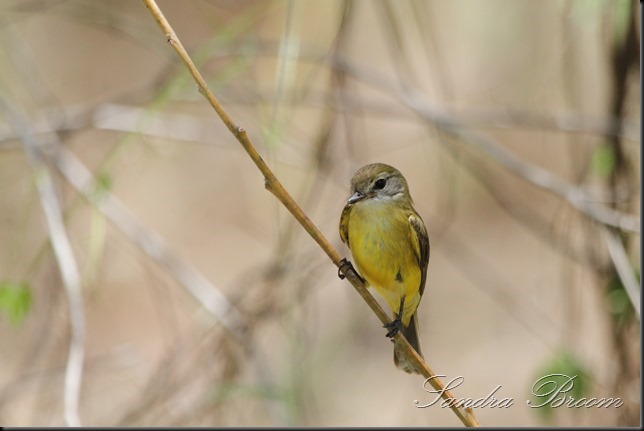
We next stopped in Jabiru the main town of Kakadu where one can do a little shopping, fill the fuel tank and stay at some of the better accommodation in Kakadu. One of the hotels being the Mercure which from the air, is shaped like a crocodile. We found something to eat at the local supermarket and sat inside enjoying the air conditioning.
From Jabiru we made our way south stopping at Nourlangie which is an Aboriginal Rock Art site. I had thought Carnarvon Gorge and the rock art there was spectacular but nothing compares to what we saw here.
Nabulwinjbulwinj is a dangerous spirit who eats females after striking them with a yam.
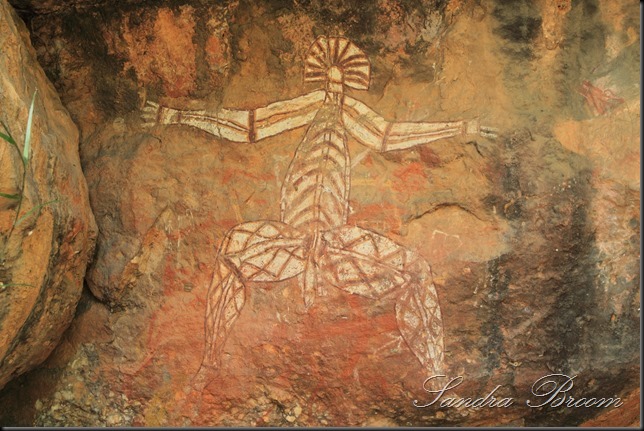
Namarrgon the lightning man is on the right of Namarndjolg .
Family groups of men and woman on the way to a ceremony pictured below.
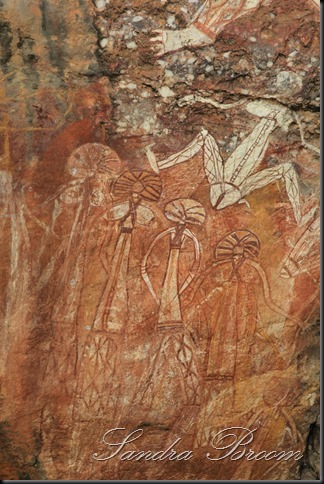
The Saratoga fish caught in these waters

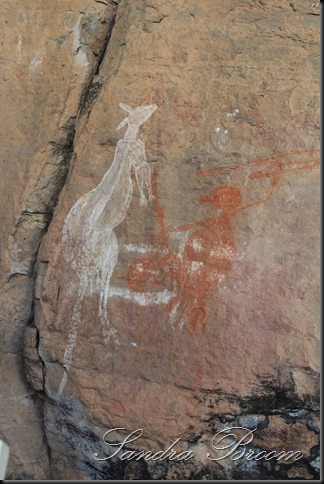
From Nourlangie we had to get to Cooinda lodge at Yellow Water by 4pm as we were booked to go on a 2 hour Yellow Water sunset cruise. For anyone visiting Kakadu National Park this is a must do. There is only one other area in Kakadu that offers cruises and that is at East Alligator, north of Jabiru. Not only had I booked the sunset cruise but I had also booked to go on the sunrise cruise the next morning. There is nothing like making the most of the time you have.
Green Pygmy Geese

There is no shortage of crocodiles here and in case you are wondering, they are all Saltwater crocs.
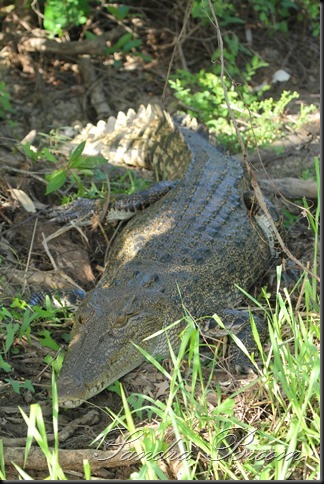

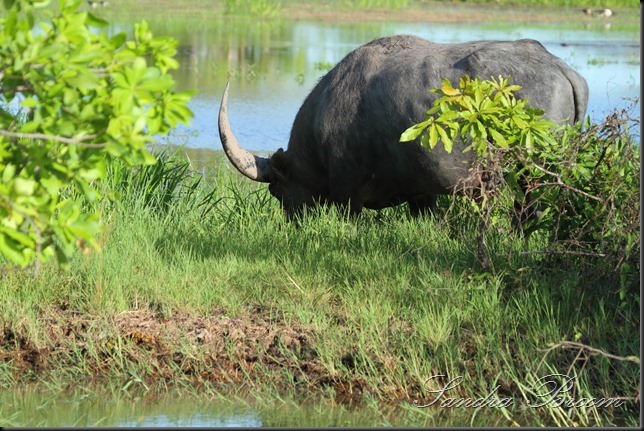
And more crocs.

Now this croc and series of photos below has a story.
We watched this crocodile swimming towards the bank before we noticed, that there was another much larger crocodile already taken up residence where this smaller croc wanted to go. What unfolded as you will most probably guess (Crocs are extremely territorial), was one croc who was in the perfect position to attack, launched himself at the smaller croc. This all unfolded so quickly and all I could do was take photos. Sadly I was using my zoom lens so I have not been able to portray the entire scene, but it was exciting.
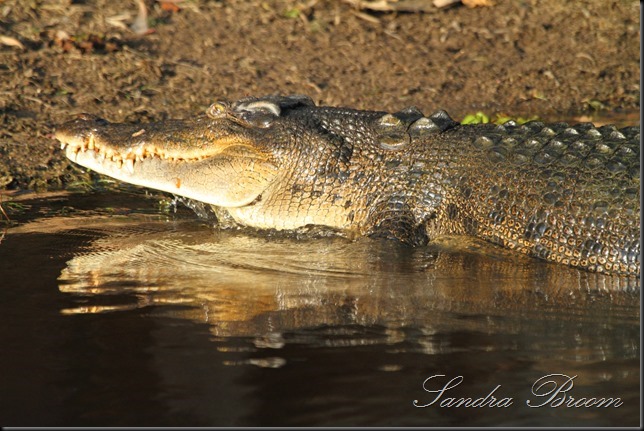


And after the chase, back on the bank, the larger croc settles down again.

I think one of the best photos from my trip, this silhouette of a Cormorant.
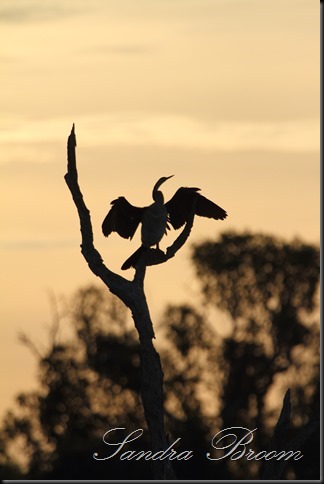
Azure Kingfisher as the light is fading.
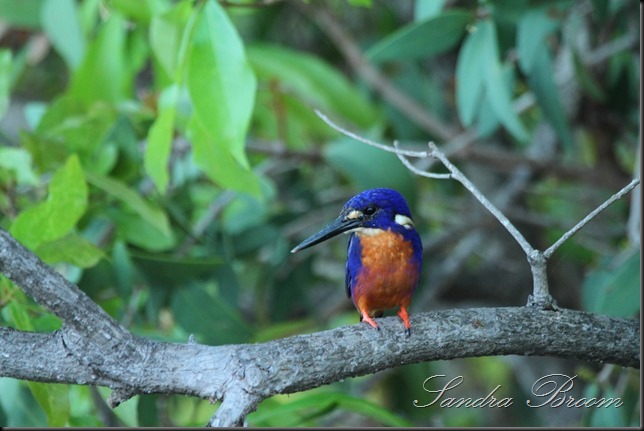
More Jacana’s but I was loosing light.

Local fishermen who I believe were staff at Cooinda Lodge and Yellow Water.

Just a reminder to the fisherman of what lurks below.
And now for some panoramic shots that you thought I had forgotten, they are endless.

This is the type of boat used for the 2 hour cruises.


The next morning we went back for a sunrise cruise.








And that wild buffalo again, still not showing his face. It seems it is always head down and bum up.
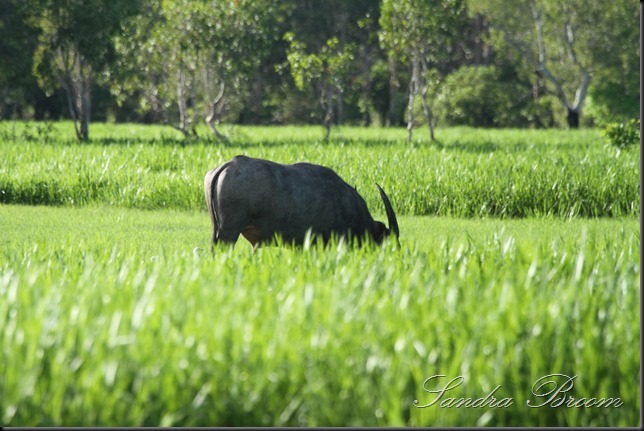
A Brolga at closer range and also without a partner.

More crocs, there is no shortage of them.

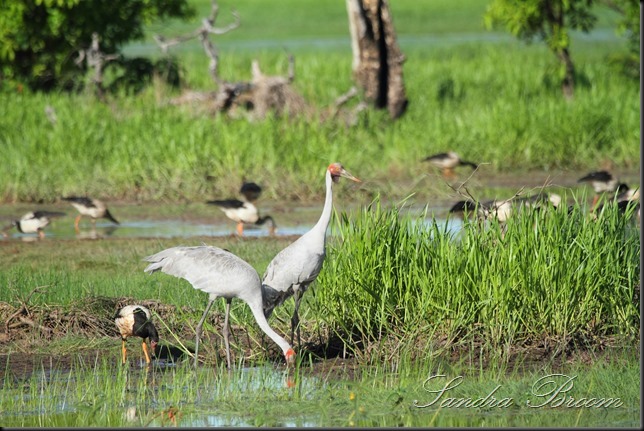
And another great sighting of a Black-necked Stork/Jabiru.
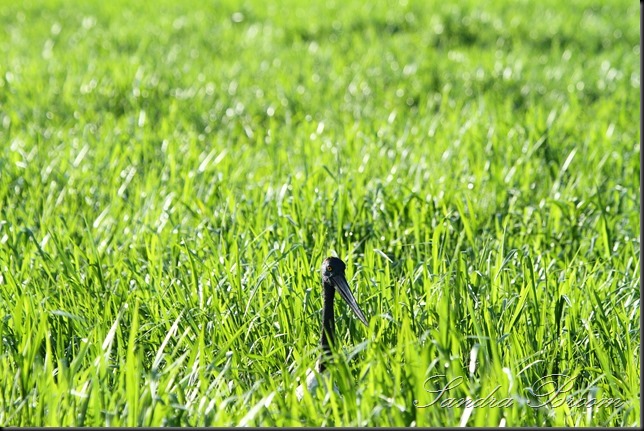

And not great shots but my favourite Kingfisher, the Azure.
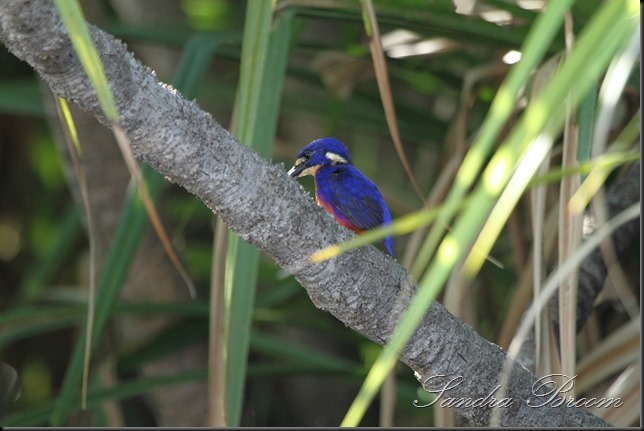
I hope this entry has wet your taste buds, because it is definitely worth the visit.









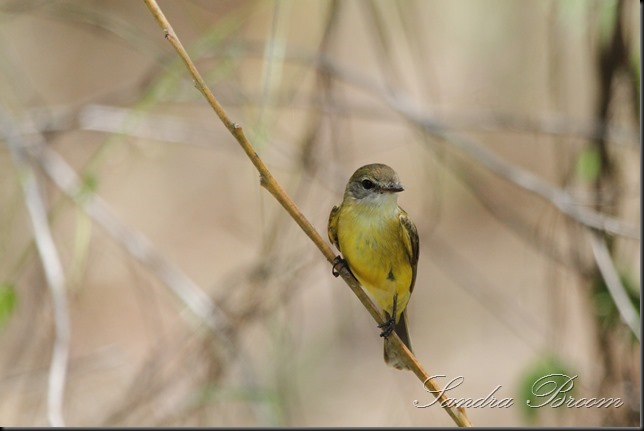

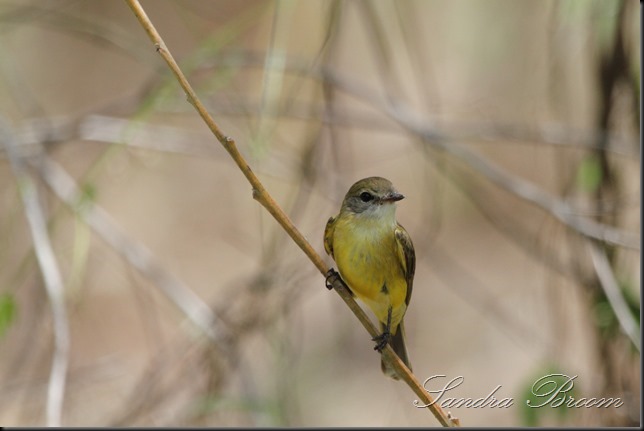



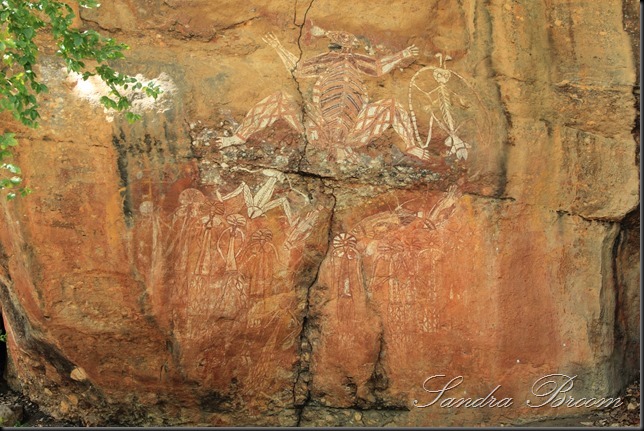



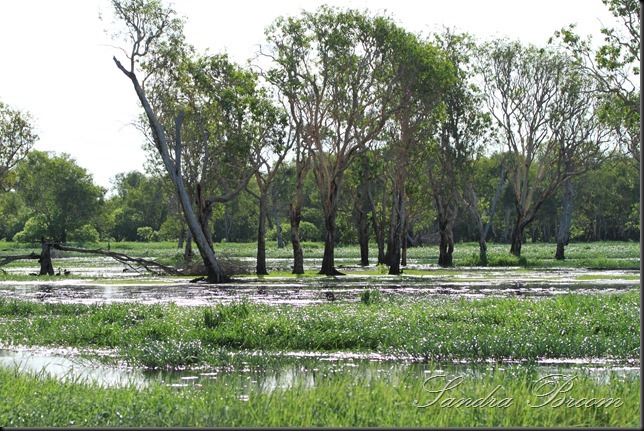



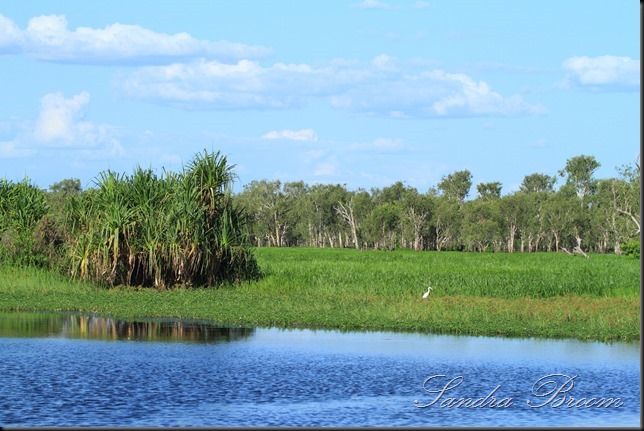

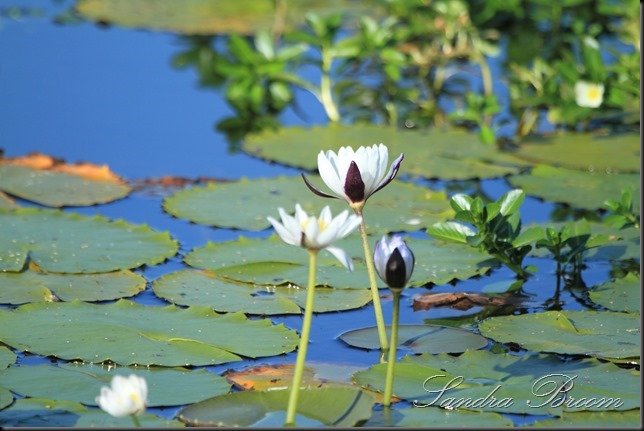
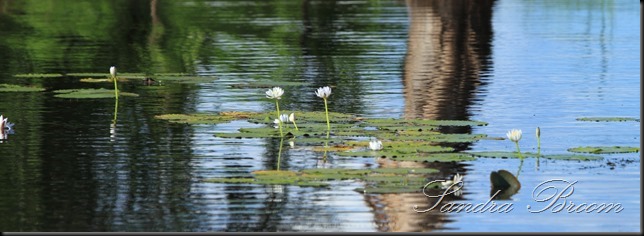

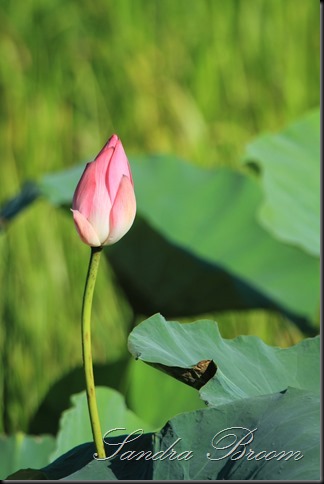


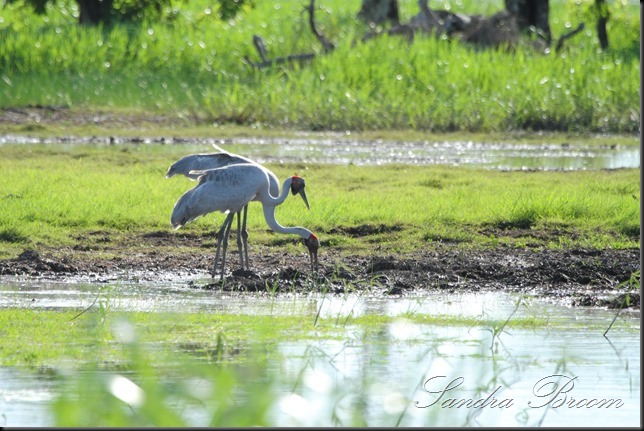
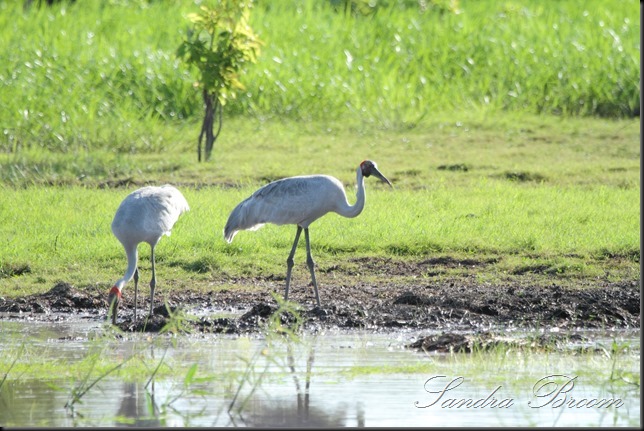
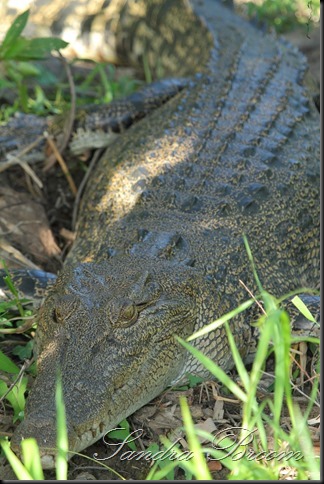



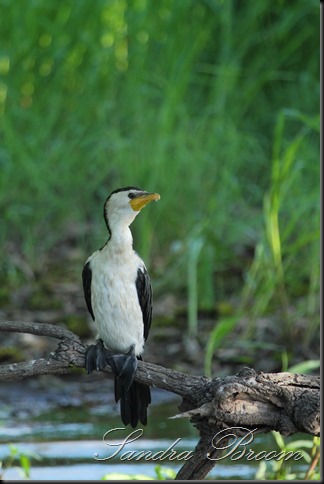
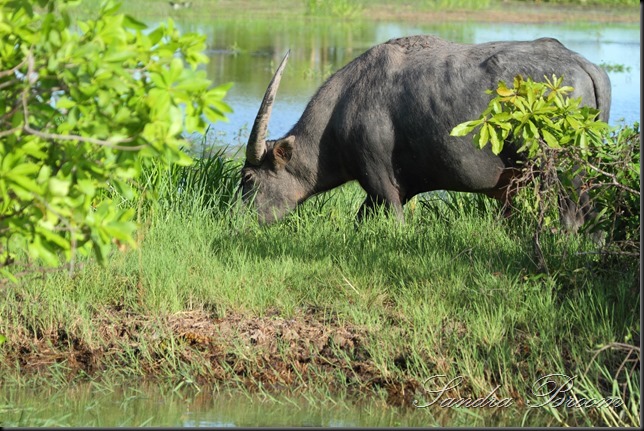




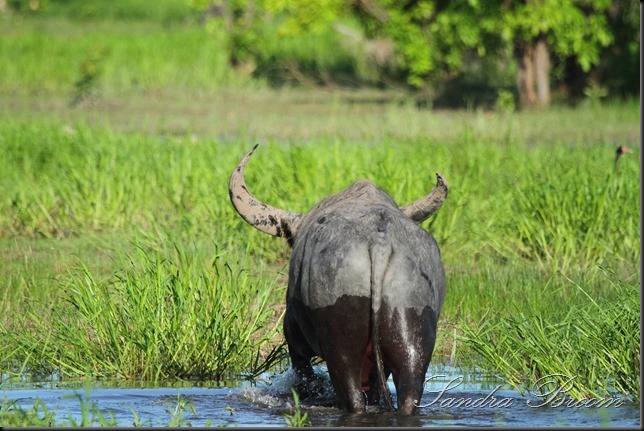










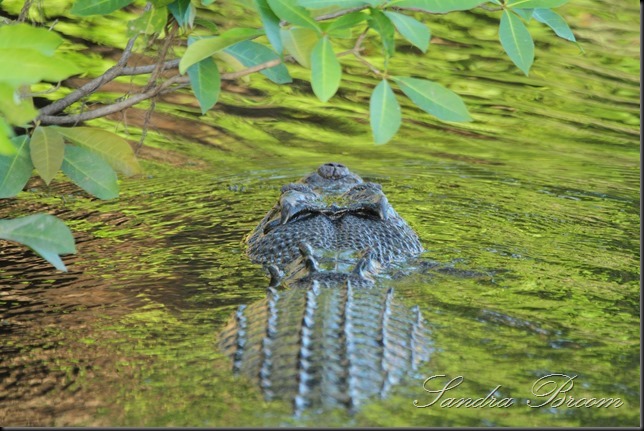

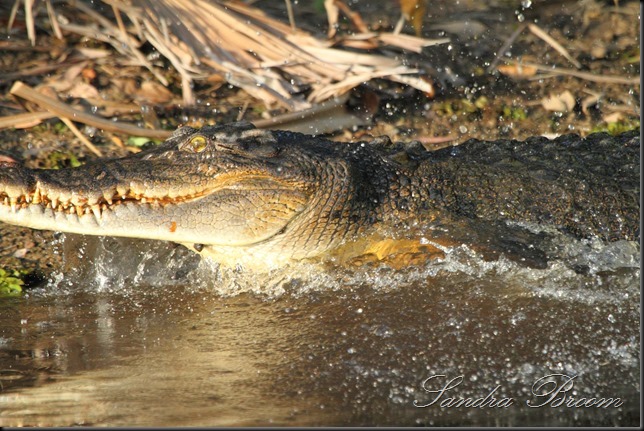
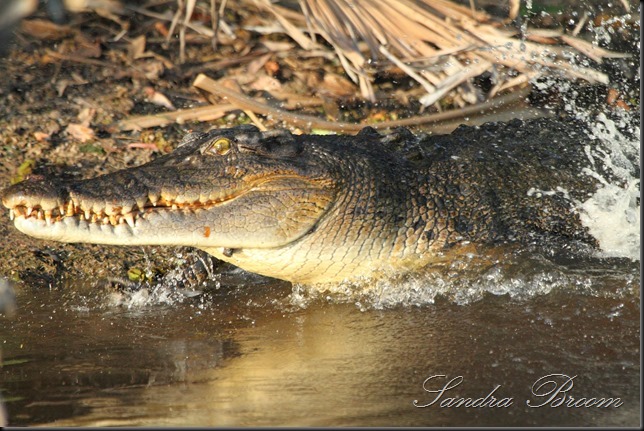
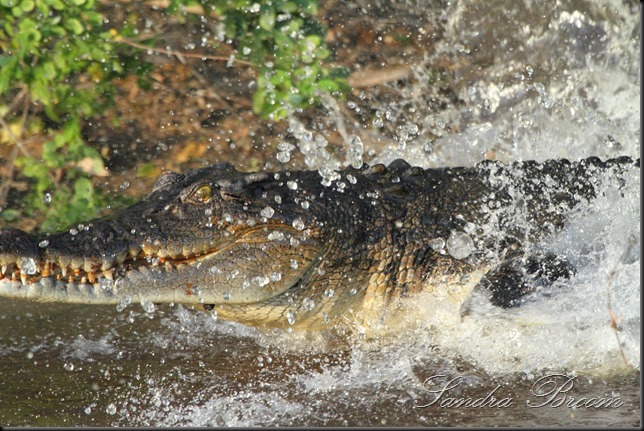





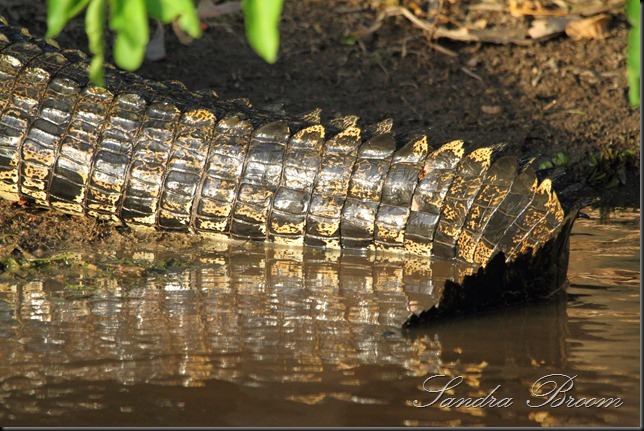


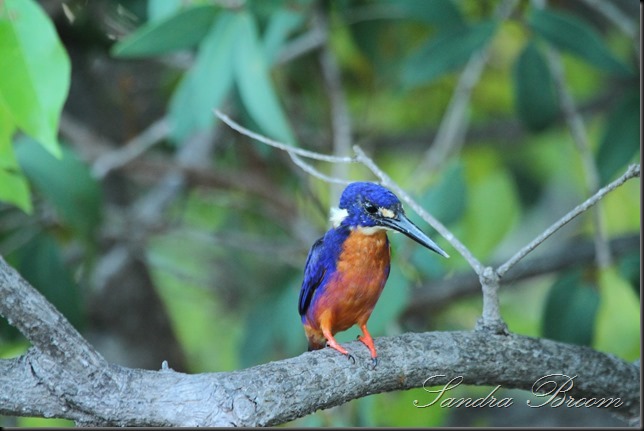
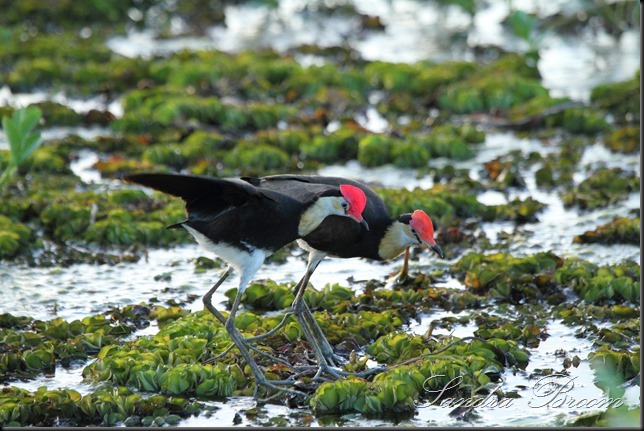




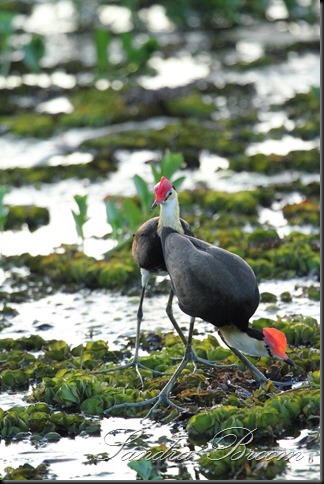
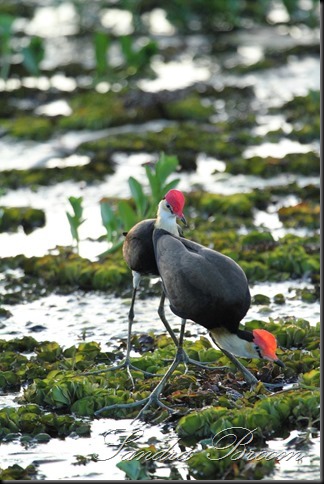


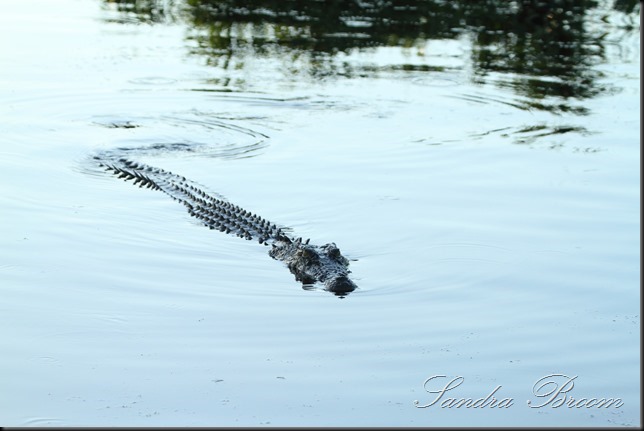

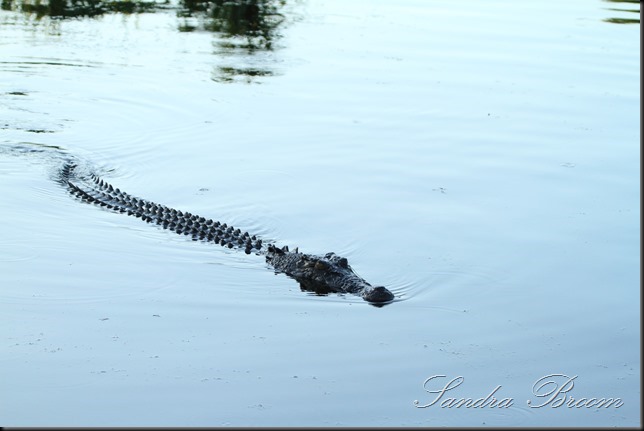


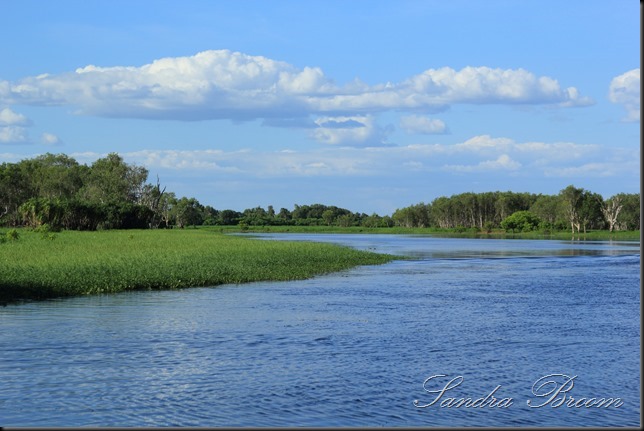

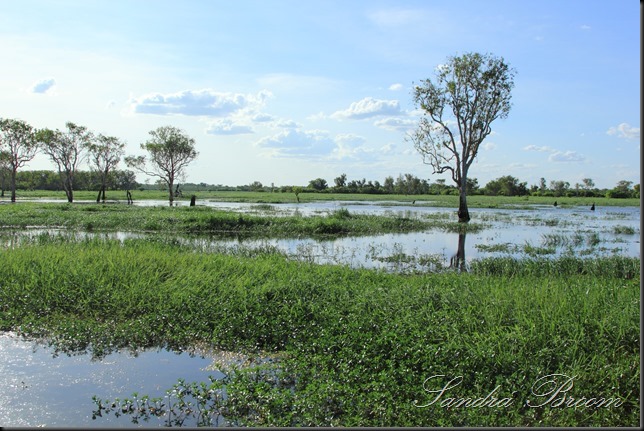
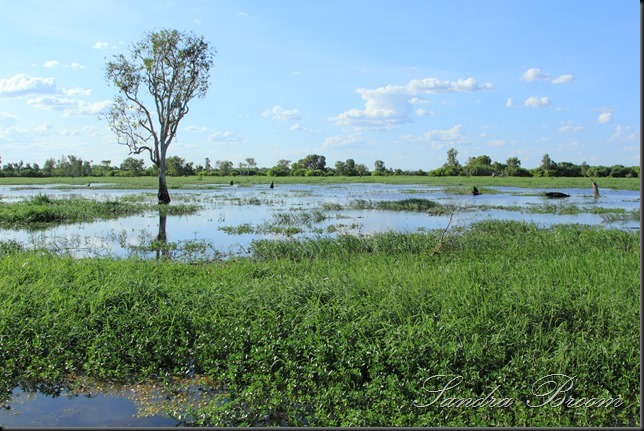

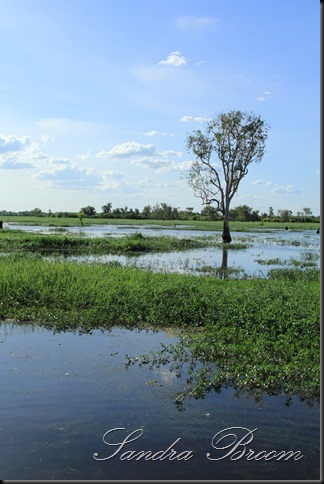
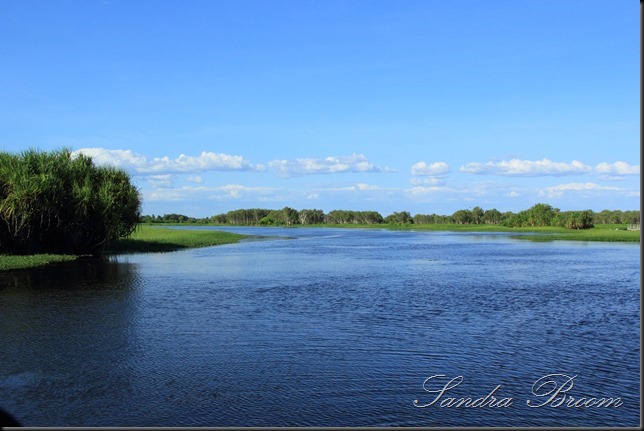





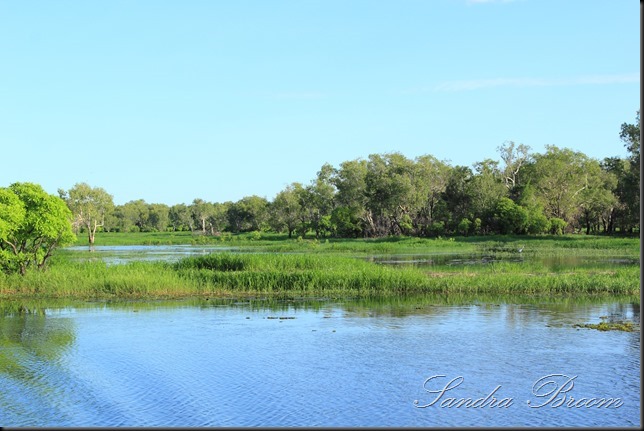




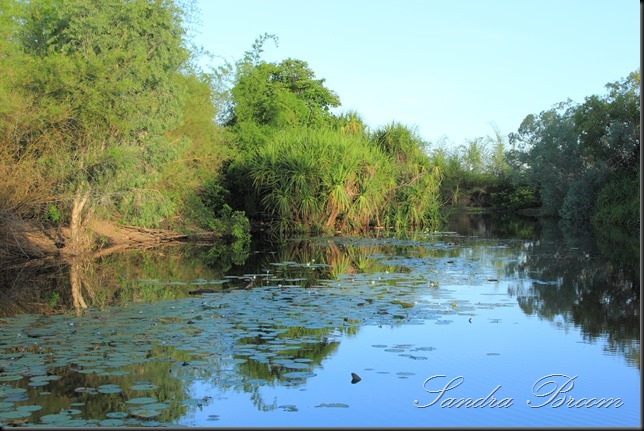
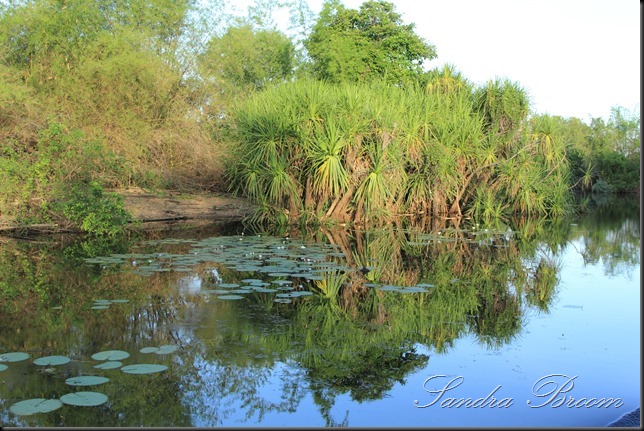


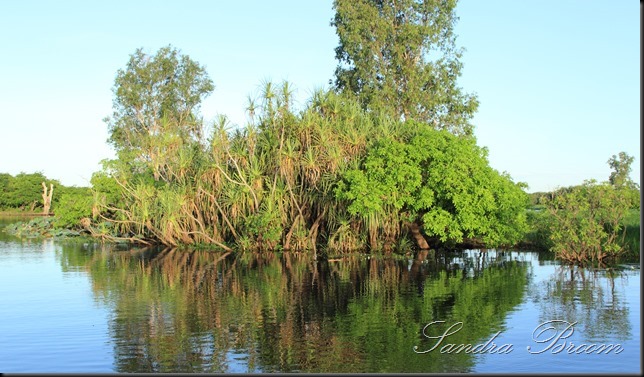

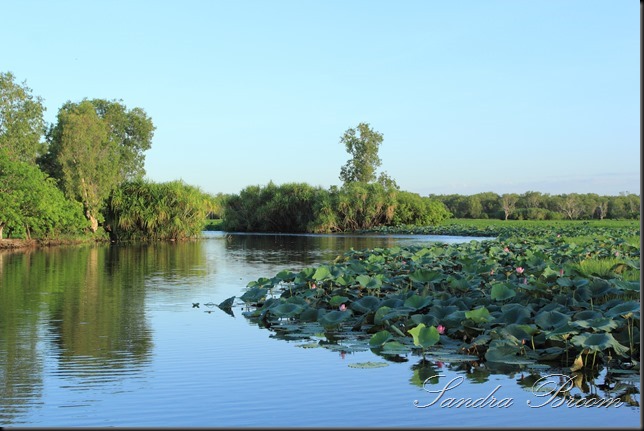



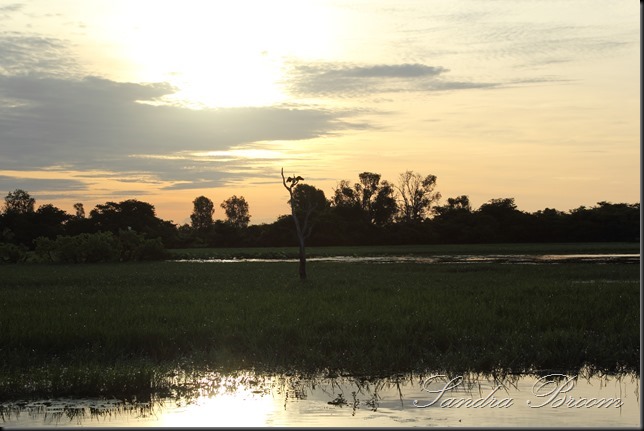
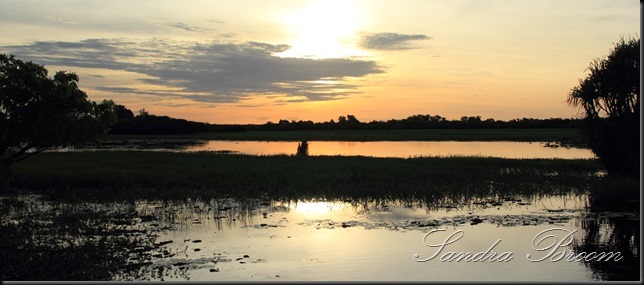





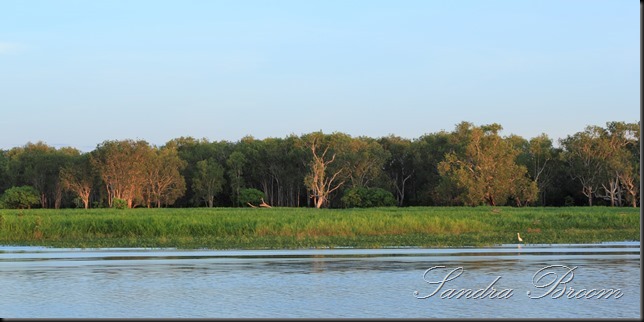
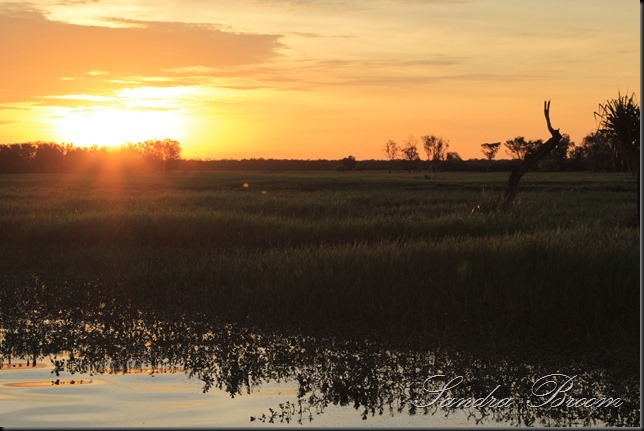




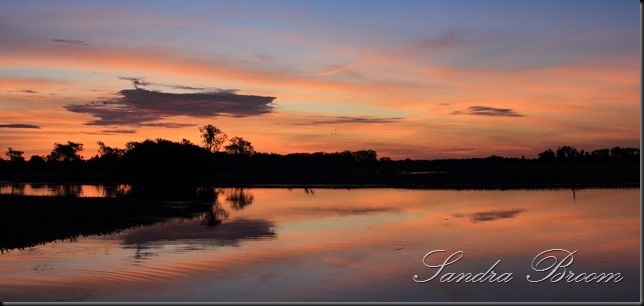


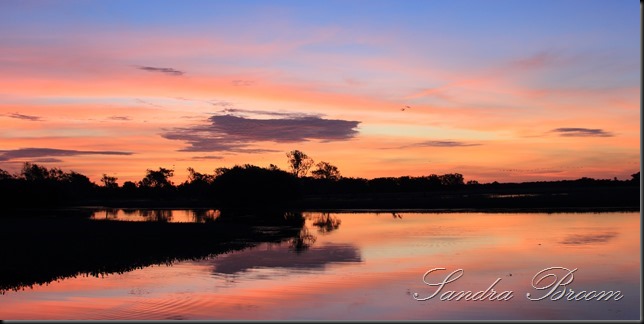








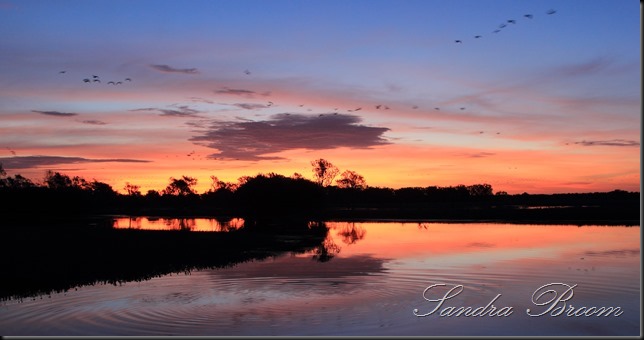







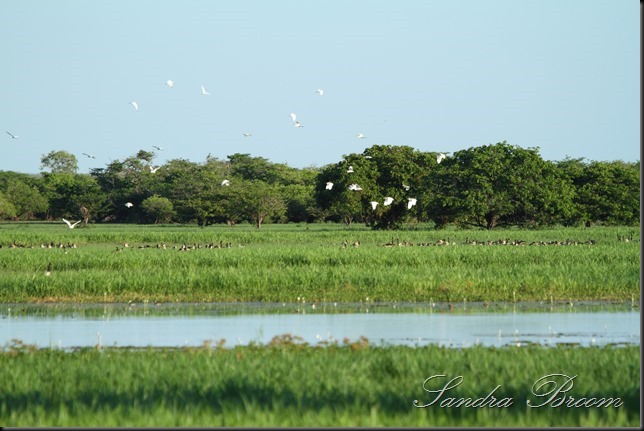




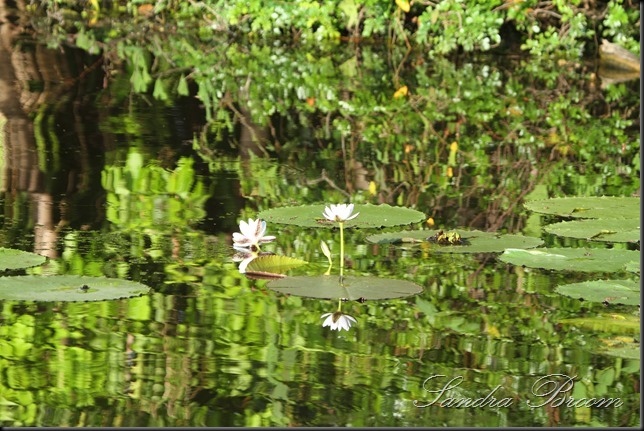




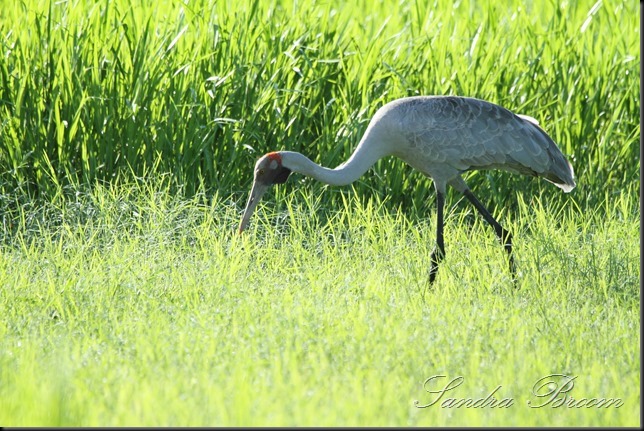
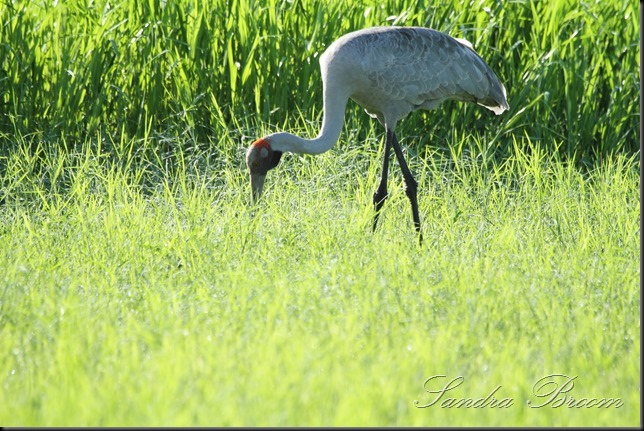

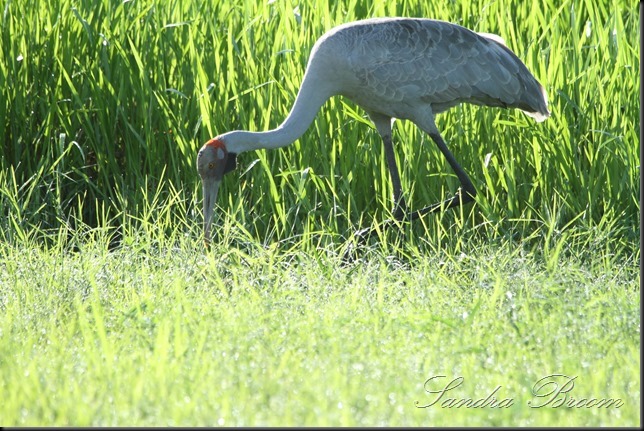


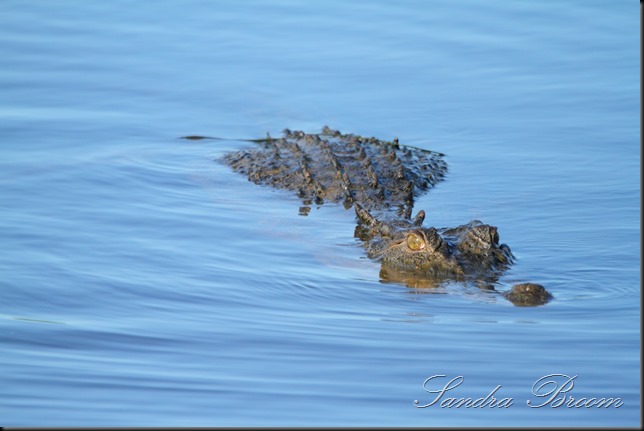



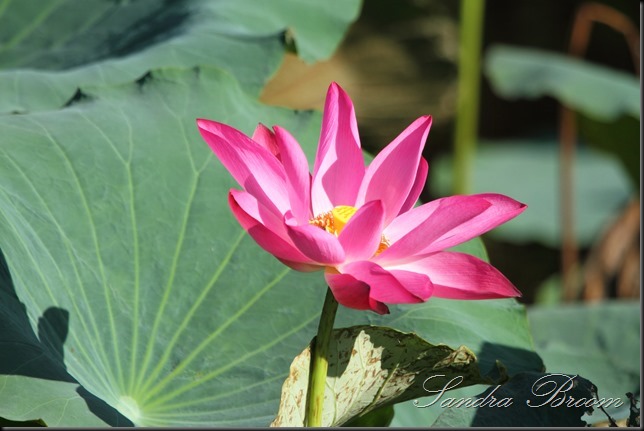



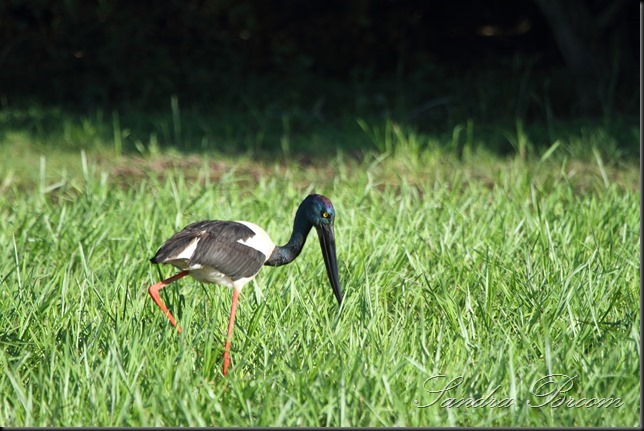

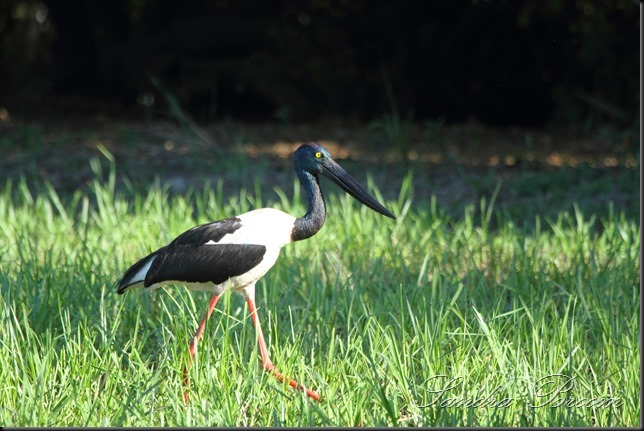


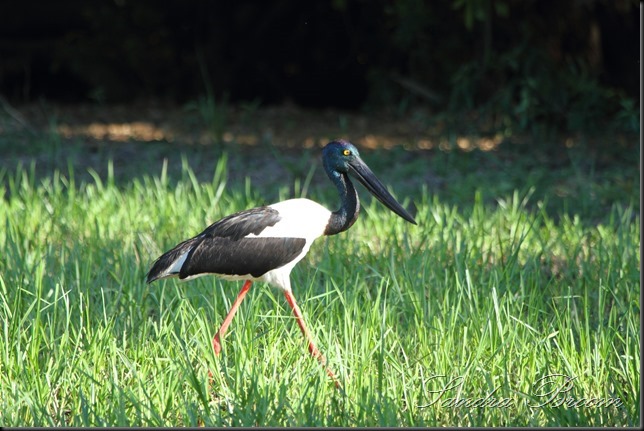




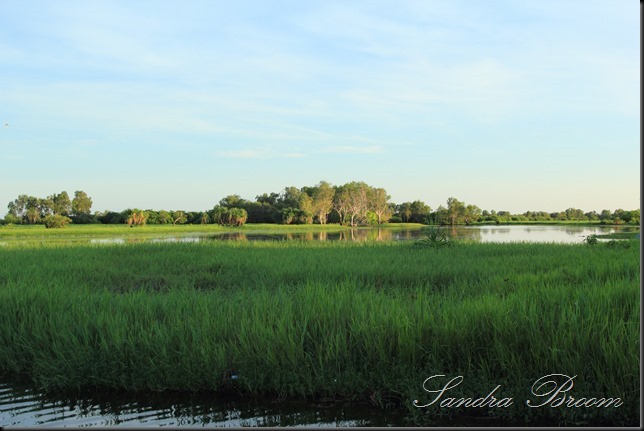
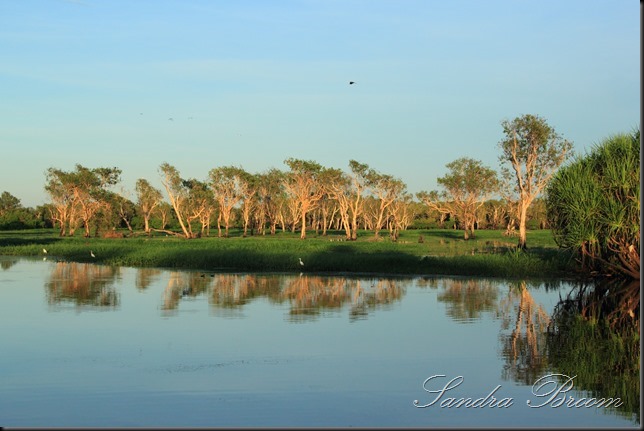




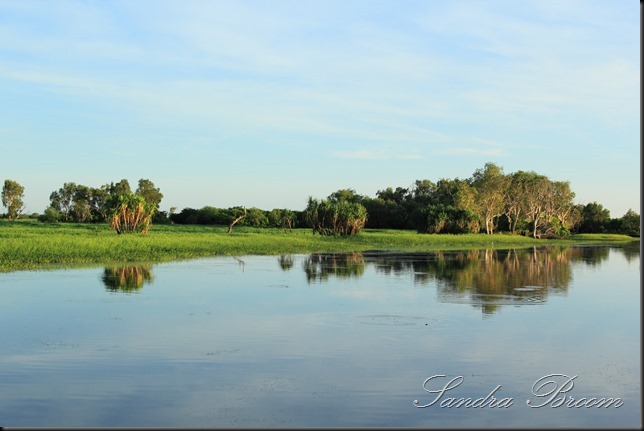





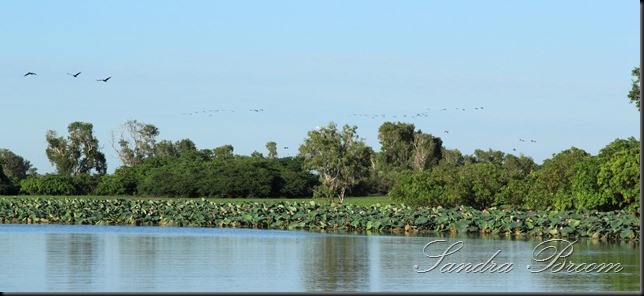


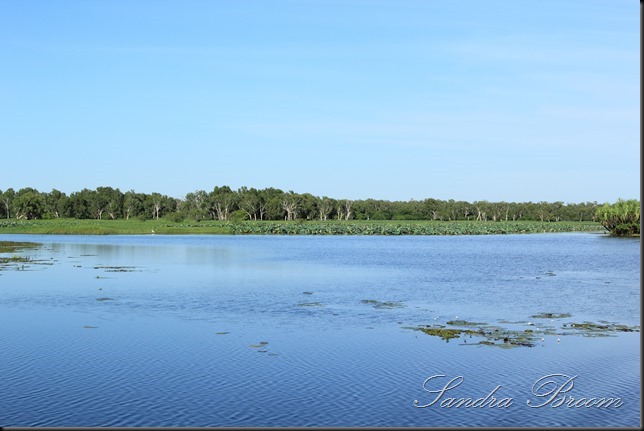




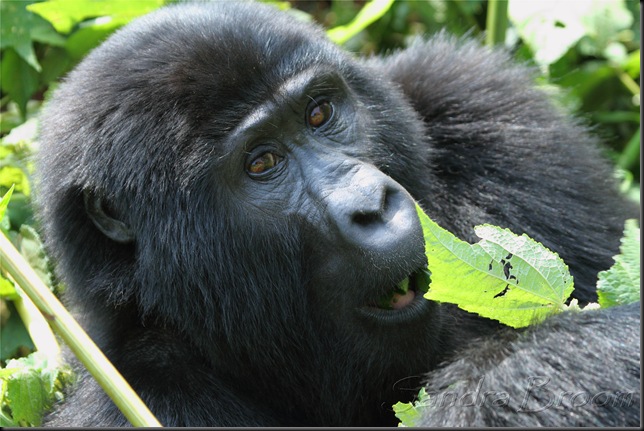
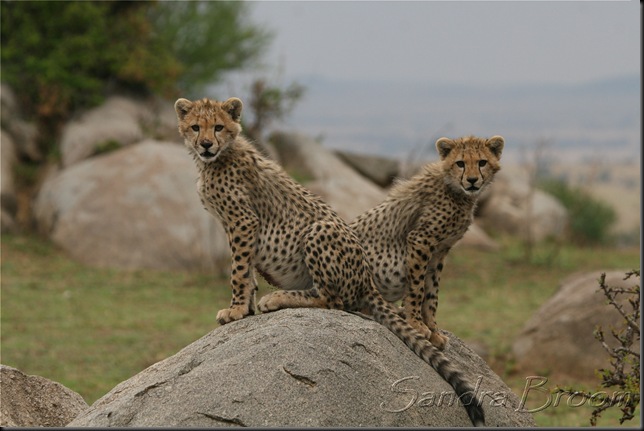
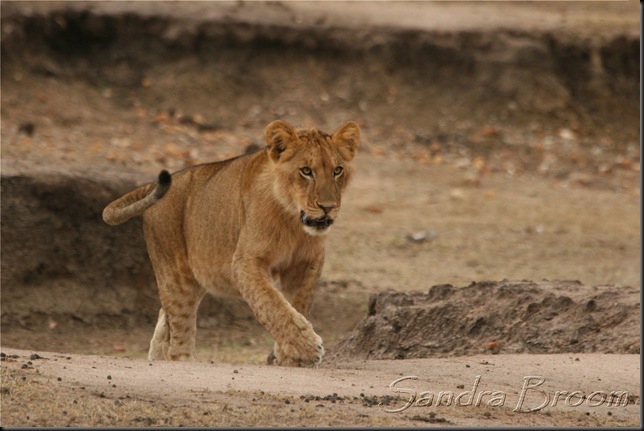






Wonderful pictures the panorama shots were spectacular. Remind me of the bayou in Louisiana, The Rock art and stories were so interesting. A peek into daily lives of the aboriginal people. Hopping to one day visit your country. WOW. The bird, flowers and animals are so stunning. Some are certainly brilliantly colored. Sorry about the buffalo. I guess he was busy eating. The crocodiles have interesting markings, Always thought they were just a muddy grey brown. Thanks for taking us on another wonderful adventure thru your beautiful pictures.
LikeLike
I really enjoyed sharing this blog. It was hard to pick what photos to share as it is a magnificent place. I plan many trips back there now that our son and his partner live up there and with their first child born 6 weeks ago.
LikeLike
Wow! What a spectacular place to visit and such great photos (as ALWAYS). I really like the silhouette of the cormorant shot, too. Really neat!
LikeLike
Glad you enjoyed Darline. I wish I could visit it every day. If I lived up in the Top End, there is no way I could work. I would be out everyday with so much to explore.
LikeLike
I finally got around to looking at this. It is just as beautiful as you say. I was also thinking that the wetlands are reminiscent of Florida and Louisiana. The crocs in Australia look different than the African but I can’t quite put my finger on it. They do look wider I think. The colors and birds are beautiful of course. The aboriginal art is very different from thee gorge. And the art in southern Australia is even different still, isn’t it?
LikeLike
I’ll be honest and say I haven’t seen art from southern Australia but I can understand why it would be so different when the lifestyle and climate is so vastly different for all cultures. I do know you will fall in love with the place.
LikeLike